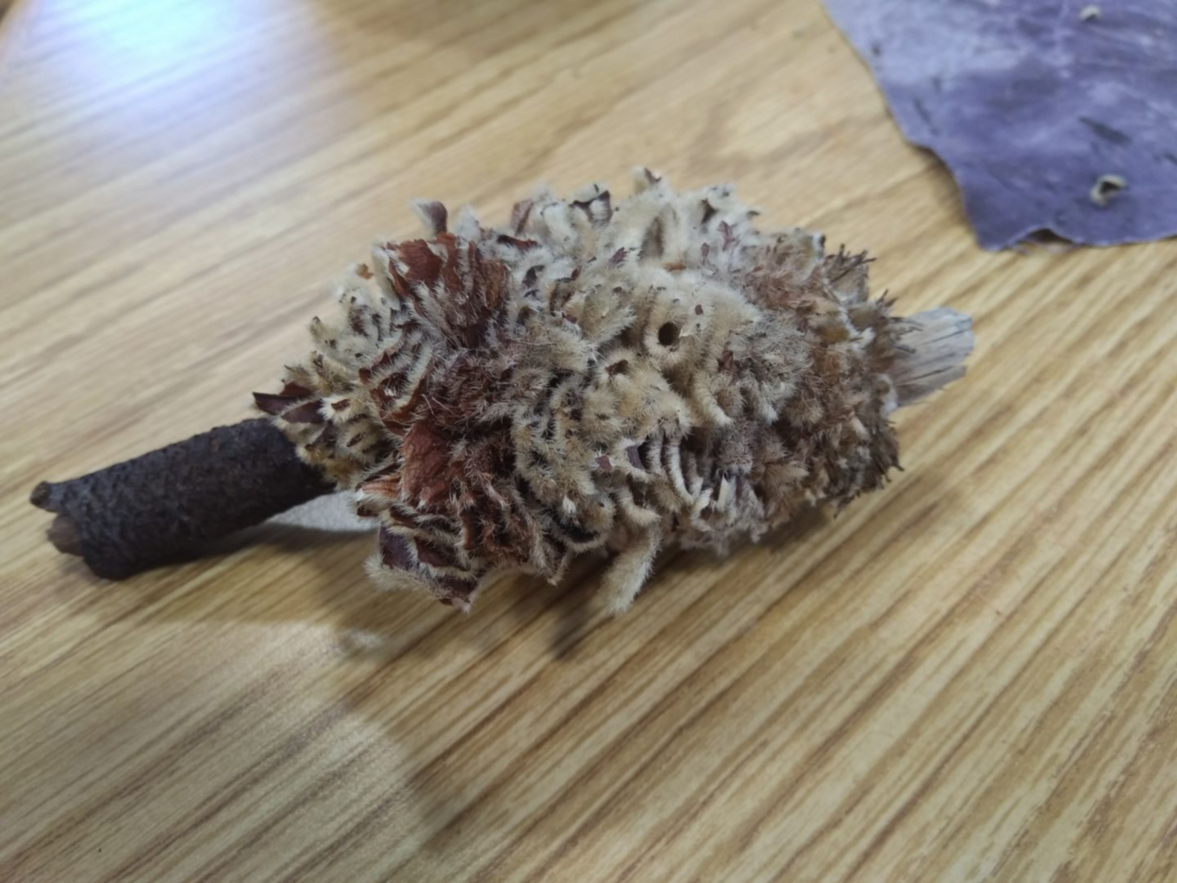Ask an Expert
Question from Freddy W. -
Good afternoon,
I'm not sure if you're the proper person to contact, but I had a question. I found this in the Coral Pink Sand Dunes Area and wasn't sure what it was. It's about 3 inches long. We believe it's a type of fungus and people have suggested it's a magnolia. I'm not native to Utah or the Kanab area so I'm not sure if magnolia's grow down there. If you can help identify it or direct me to someone who could I'd be very grateful.
Thank you so much,
Freddy W.

Answer from Dr. Mike Kuhns, USU Extension Forester and Professor (sent 4/16/18) -
Freddy,
It is not a magnolia. There are planted magnolias in Utah but none in the wild. I believe that it is the beginning of a witches broom or something like that. A witches broom is simply an area of abnormal growth that forms on a woody plant and leads to a proliferation of growth in one area. It will tend to grow in that abnormal state year after year, which can cause the shoot that it is growing from to die due to disruption of the vascular system. That may have happened here. Witches brooms and other abnormal growth can form as a reaction to a virus or another pathogen or for no apparent reason, but all likely happen due to a genetic mutation. Burls on tree trunks are another form of such a mutation. Sometimes the shoot grows in a flattened form which is called fasciation.
These growths are essentially plant cancers. They will continue to grow until they can no longer be supported by the plant they are attached to, and then they will break off or they will lose their source of water and other materials they need to survive as they disrupt the vascular system. Generally I don’t think that they are contagious, and if you prune them off below their point of attachment they will die and will not come back, at least on that shoot.
These types of growths happen on many different types of plants and on a particular plant they can happen in association with different parts of the plants, but usually are associated with the formation of vegetative or reproductive buds. This one looks like it could be either of those. You would have to pick it apart and look for reproductive structures to tell which it is. If you had more of the plant farther down where it is growing normally I could tell you what plant it is. It looks like it would be from an angiosperm, not as gymnosperm. It could be from a willow.

